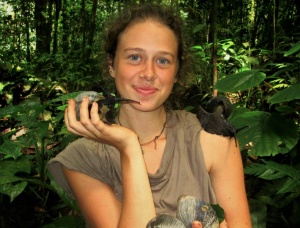Panisi, M., de Lima, R.F., Lima, J.C., dos Santos, Y., Sinclair, F., Tavares, L. & Holyoak, D.T. (2022) Terrestrial Mollusca of the Gulf of Guinea Oceanic Islands. Biodiversity of the Gulf of Guinea Oceanic Islands. Science and Conservation (ed. by Ceríaco, L.M.P., de Lima, R.F., Melo, M. and Bell, R.C.). Springer. DOI:10.1007/978-3-031-06153-0_16.
The oceanic islands of the Gulf of Guinea are known for their remarkable endemic species richness, and the terrestrial Mollusca group is particularly distinctive. This chapter summarizes the exploration and diversity of this group, discussing biogeography, evolution, ecology, and conservation to identify persisting knowledge gaps. Terrestrial malacological studies in the Gulf of Guinea islands started at the end of the eighteenth century but have been intermittent. Recent systematic surveys have continued to find novelties, and the most recent revision lists 96 species, of which 62 are endemic: Príncipe has 40 terrestrial (60% single-island endemic) and five seashore species, São Tomé has 52 terrestrial (50% single-island endemic) and seven seashore species, Annobón has 14 terrestrial species (50% single-island endemic), 3 species are endemic to Príncipe and São Tomé, and 2 are endemic to the three islands. The islands were colonized by diverse “clades” arriving from continental Africa, which is consistent with biogeographical patterns from other taxonomic groups. However, in line with Mollusca dispersal limitations, inter-island colonization seems to be less frequent, while there are multiple cases of speciation within the same island. The land snail assemblage on São Tomé seems to be strongly structured by land-use type: endemics being associated mostly with forest and non-endemics to anthropogenically modified environments. Only 13 species have been recorded across the altitudinal range of São Tomé, suggesting altitude is also essential to determining species distribution. Habitat loss and introduced species are important threats, but so far, only the endemic Archachatina bicarinata has been listed as threatened. Despite recent progress, further studies are still needed to better understand this unique fauna and inform conservation strategies.


